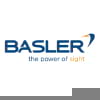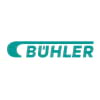North America Self-Organizing Network (SON) Market, By Offering (Software and Services), Network (RAN, Wi-Fi, Core Network, and Backhaul), Architecture (C-SON (Centralised), D-SON (Decentralized), and H-SON (Hybrid)), Network Technology (4G/LTE, 2G/3G, and 5G), Application (Network Security & Authentication, WAP, Intermachine Communication, Global Positioning System, Gaming, and Others) - Industry Trends and Forecast to 2030.
North America Self-Organizing Network (SON) Market Analysis and Size
The self-organizing network (SON) market is segmented based on offering, network, architecture, network technology and application. The growth among segments helps you analyse niche pockets of growth and strategies to approach the market and determine your core influencing areas and the difference in your target markets.
Data Bridge Market Research analyses that the North America Self-Organizing Network (SON) market which was USD 1,782.03 million in 2022, would rocket up to USD 5,338.53 million by 2030, and is expected to undergo a CAGR of 12.4% during the forecast period. This indicates the market value. “C-SON” dominates the architecture segment of the North America self-organizing network (SON) market as telecommunications networks are becoming increasingly complex with the deployment of multiple technologies, frequency bands, and network layers (2G, 3G, 4G, and 5G). C-SON helps manage this complexity by automating network optimization, configuration, and troubleshooting tasks, leading to more efficient network operations. In addition to the insights on market scenarios such as market value, growth rate, segmentation, geographical coverage, and major players, the market reports curated by the Data Bridge Market Research also include depth expert analysis, pipeline analysis, pricing analysis, and regulatory framework.
North America Self-Organizing Network (SON) Market Scope and Segmentation
|
Report Metric |
Details |
|
Forecast Period |
2023 to 2030 |
|
Base Year |
2022 |
|
Historic Years |
2021 (Customisable 2015-2020) |
|
Quantitative Units |
Revenue in USD Million, Volumes in Units, and Pricing in USD |
|
Segments Covered |
By Offering (Software and Services), Network (RAN, Wi-Fi, Core Network, and Backhaul), Architecture (C-SON (Centralised), D-SON (Decentralized), and H-SON (Hybrid)), Network Technology (4G/LTE, 2G/3G, and 5G), Application (Network Security & Authentication, WAP, Intermachine Communication, Global Positioning System, Gaming, and Others) |
|
Countries Covered |
U.S, Canada, and Mexico |
|
Market Players Covered |
Nokia Corporation (Finland), Huawei Technologies (China), Telefonaktiebolaget LM Ericsson (Sweden), Cisco Systems, Inc. (U.S.), ZTE Corporation (China). Samsung Electronics Co., Ltd. (South Korea), NEC Corporation (Japan), CommScope Holding Company, Inc. (U.S.), AirHop Communications (U.S.), Cellwize Wireless Technologies Pte Ltd. (Israel), Amdocs (U.S.), ASOCS Ltd. (Israel), P.I. Works (Turkey), VIAVI Solutions Inc. (U.S.), Siradel (France), Reverb Networks (U.S.), InfoVista (France), Accedian (Canada), Telcordia Technologies (U.S.), AIRCOM International (U.K.) |
|
Market Opportunities |
|
Market Definition
The North America Self-Organizing Network (SON) market involves both hardware and software components, including base stations, access points, network management systems, network controllers, and SON platforms. It also includes professional services such as consulting, deployment, integration, and support services related to SON implementation. The SON market serves network operators, telecommunications service providers, and equipment vendors seeking to improve network efficiency, optimize resources, enhance user experience, and reduce operational costs.
North America Self-Organizing Network (SON) Market Dynamics
Drivers
- Increasing Network Complexity
The growing complexity of modern networks, driven by the deployment of multiple technologies (2G, 3G, 4G, and 5G), diverse frequency bands, and heterogeneous network elements, is a key driver for SON. SON solutions automate network management tasks, such as configuration, optimization, and troubleshooting, to efficiently handle the complexity and improve network performance.
- Growing Demand for Efficient Network Management
With the exponential increase in mobile data traffic and the need for seamless connectivity, there is a rising demand for efficient network management solutions. SON offers automation, real-time optimization, and self-configuration capabilities, enabling network operators to efficiently manage network resources, enhance user experience, and reduce operational costs.
Opportunity
- Integration with IoT and mMTC
SON presents opportunities to manage and optimize networks for the growing Internet of Things (IoT) and massive Machine Type Communications (mMTC) applications. By intelligently managing connectivity, interference, and resource allocation, SON can support the scaling and efficient operation of IoT and mMTC devices, enabling new business opportunities.
Restraints
- Lack of Standardization and Interoperability
The absence of standardized interfaces and protocols for SON solutions poses a restraint. Interoperability challenges can arise when integrating SON with existing network infrastructures or with equipment from different vendors, hindering seamless deployment and compatibility.
Challenges
- High Initial Investment and Implementation Costs
Implementing SON solutions often requires significant upfront investment in hardware, software, and skilled resources. The cost of integrating SON with existing networks and the complexity of deployment can be a restraint for network operators, particularly for small-scale operators with limited budgets.
This North America Self-Organizing Network (SON) market report provides details of new recent developments, trade regulations, import-export analysis, production analysis, value chain optimization, market share, the impact of domestic and localized market players, analyses opportunities in terms of emerging revenue pockets, changes in market regulations, strategic market growth analysis, market size, category market growths, application niches and dominance, product approvals, product launches, geographic expansions, technological innovations in the market. To gain more info on the Self-Organising Network (SON) market contact Data Bridge Market Research for an Analyst Brief, our team will help you make an informed market decision to achieve market growth.
Recent Developments
- In February 2020, Corning Incorporated has announced its development of 5G mmWave infrastructure in partnership with Qualcomm Incorporated. This project is mainly focused on public and enterprise venues to deliver affordable and easy installable 5G ready networks. Corning’s virtualized RAN architecture has been leveraged by 5G systems to manage the small cells. This has helped the company to become among the firsts to deliver 5G-NR over mmWave spectrum in indoor segment and register a significant revenue growth
- In February 2019, Cisco Systems, Inc. announced to join hands with Telenor Group for signing a Joint Purpose Agreement 2.0. The collaboration is aimed at expanding the offerings in the field of cloud, cybersecurity and digital workplace and will be engaged in exploring Open Virtualized RAN (vRAN) solutions for 5G. The new collaboration increased the growth of the company by creating new opportunities
North America Self-Organizing Network (SON) Market Scope
The North America Self-Organizing Network (SON) market is segmented on the basis of offering, network, architecture, network technology and application. The growth amongst these segments will help you analyse meagre growth segments in the industries and provide the users with a valuable market overview and market insights to help them make strategic decisions for identifying core market applications.
Offering
- Software
- Services
Network
- RAN
- Wi-Fi
- Core Network
- Backhaul
Architecture
- C-SON (centralised)
- D-SON (decentralized)
- H-SON (hybrid)
Application
- Network security and authentication
- WAP
- Intermachine Communication
- Global Positioning System
- Gaming
- Others
Network Technology
- 4G/LTE
- 2G/3G
- 5G
North America Self-Organizing Network (SON) Market Regional Analysis/Insights
The North America Self-Organizing Network (SON) market is analysed and market size insights and trends are provided by country, offering, network, architecture, network technology and application, as referenced above.
The countries covered in the North America Self-Organizing Network (SON) market report are U.S., Canada, and Mexico.
The U.S. dominates the market because U.S. is known for its strong technological capabilities and innovation across various industries, including telecommunications. The country has been at the forefront of developing and adopting advanced wireless technologies, such as 4G LTE and now 5G, which require efficient network management solutions like SON
The country section of the report also provides individual market-impacting factors and changes in regulation in the market domestically that impact the current and future trends of the market. Data points like downstream and upstream value chain analysis, technical trends, and Porter’s five forces analysis, case studies are some of the pointers used to forecast the market scenario for individual countries. Also, the presence and availability of North America brands and the challenges faced due to large or scarce competition from local and domestic brands, the impact of domestic tariffs, and trade routes are considered while providing forecast analysis of the country data.
Semiconductor Infrastructure growth Installed base and New Technology Penetration
The North America Self-Organizing Network (SON) market also provides you with a detailed market analysis for every country’s growth in healthcare expenditure for capital equipment, installed base of different kinds of products for the North America Self-Organizing Network (SON) market, the impact of technology using life line curves, and changes in healthcare regulatory scenarios and their impact on the Self-Organising Network (SON) market. The data is available for the historic period 2010-2020.
Competitive Landscape and North America Self-Organizing Network (SON) Market Share Analysis
The North America Self-Organizing Network (SON) market competitive landscape provides details by competitors. Details included are company overview, company financials, revenue generated, market potential, investment in research and development, new market initiatives, North America presence, production sites and facilities, production capacities, company strengths and weaknesses, product launch, product width and breadth, and application dominance. The above data points provided are only related to the companies' focus related to the market.
Some of the major players operating in the North America Self-Organizing Network (SON) market are:
- Nokia Corporation (Finland)
- Huawei Technologies (China)
- Telefonaktiebolaget LM Ericsson (Sweden)
- Cisco Systems, Inc. (U.S.)
- ZTE Corporation (China)
- Samsung Electronics Co., Ltd. (South Korea)
- NEC Corporation (Japan)
- CommScope Holding Company, Inc. (Israel)
- AirHop Communications (U.S.)
- Cellwize Wireless Technologies Pte Ltd. (Isreael)
- Amdocs (U.S.)
- ASOCS Ltd. (Israel)
- P.I. Works (Turkey)
- VIAVI Solutions Inc. (U.S.)
- Siradel (France)
- Reverb Networks (U.S.)
- InfoVista (France)
- Accedian (Canada)
- Telcordia Technologies (U.S.)
- AIRCOM International (U.K.)
SKU-
















